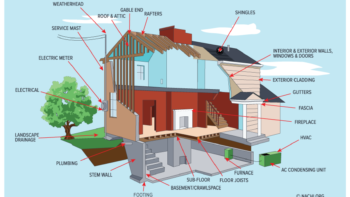
Organizing documents and overseeing building installations constantly helps prepare for building inspection. The building inspection, also called auto-visitor or technical inspection is an extremely necessary action to prevent major accidents and even tragedies in buildings. For the proper ארד בדק בית you need to be specific now.

Defined by the technical standard as the assessment of the state of the building and its constituent parts, performed to guide maintenance activities, a building inspection is indispensable, whether in residential, commercial or public buildings.
But these maintenance measures are not always up to date and this can pose a serious risk to the structure, as well as being a possible certificate of irregularity in the building inspection report. With so many determinations and standards to meet, it can be confusing to understand exactly what needs to be done to get out of this self-check unscathed. Check out three tips for not having any problems during the technical survey:
Check the documentation
Have all building documents organized and regularized? In the first step of the building inspection process, these materials will be evaluated. Check the contract expiration dates and update them periodically. Have maintenance-related documents available such as:
- Latest Maintenance Plan Version
- Gas tightness test certificate
- Registration of equipment and machinery
- Tank cleaning and disinfection certificate
- Previous Building Inspection Reports
- Fire extinguisher cylinder pressurization test certificate
- Extinguisher Stamps
- Annual Elevator Inspection Report
Do not forget to also organize administrative documents such as property tax, an internal regimen of the condominium and Registration in the Urban Cleaning System, and technicians such as landscaping, executive, coating, painting, waterproofing and building projects.
Supervise building installations
Before the survey asks yourself:
- Are there apparent structural elements?
- Are the elevators in good working order?
- Has the electrical installation system been serviced?
- Are there leaks at some point in the building?
- How are the building coverings?
- Are internal and external sealing systems in order?
- Does the hydraulic installation need any repair?
- Are the generators working?
- Does the building have sufficient accessibility facilities?
- Roofs, gutters and other roofs are not damaged?
- Is the firefighting system in order signs, extinguishers, etc.?
Ideally, make a periodic checklist of all facilities that need to be reviewed. The maintenance of these items is indispensable for the health of the building and safety of the workers, residents and visitors of the place.
Extra note: For every technical service contracted always require the Technical Responsibility Annotation, as this ensures that the building has passed the inspection of a qualified professional.
Ensure the risks
It is very important to note if there are problems arising from the construction or design of the building. Note if there are any deficiencies in this regard and look for solutions to this. Another point to note is the correct uses of facilities and the structure itself.
For example, an end-of-life elevator may no longer be in working condition and therefore should not be in operation. Or, its use for heavy load loading, as a change, must be attested by a survey, as well as the weight capacity limit must be informed. Already the structure may be depreciated, or with aggravated deteriorating agents, which puts safety and health at risk. All these requirements will be evaluated and, when presented with risks, will be classified as critical, regular and minimum.
All set for building inspection?
By following the above tips and following all the guidelines of the engineers and technicians who will perform the survey, it will be possible to avoid accidents and irregularities. But remember: through building inspection, it is possible to have clear maintenance guidelines.
